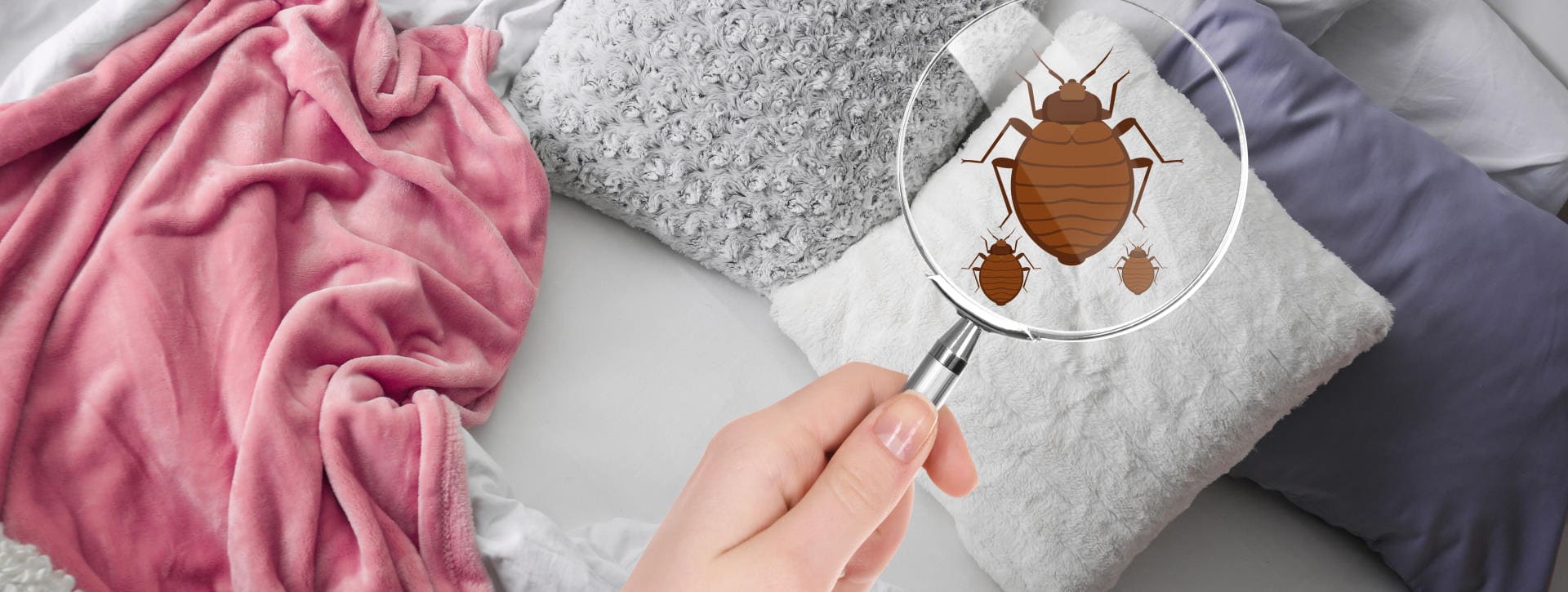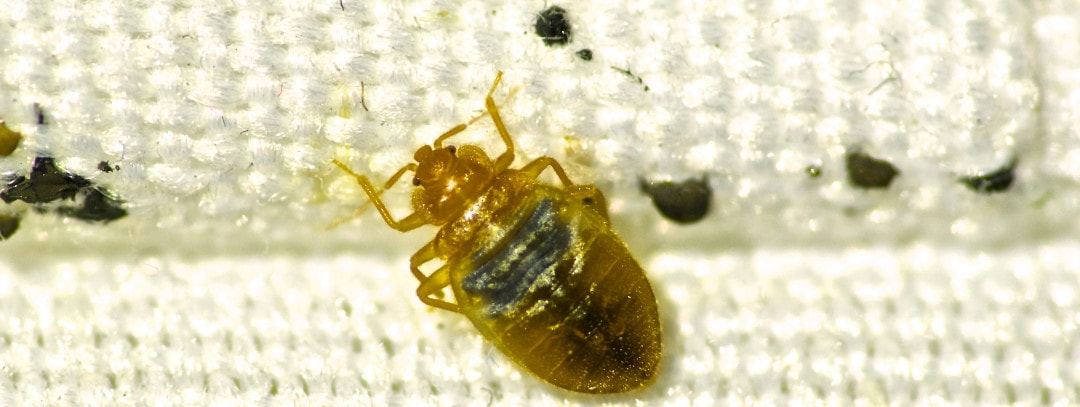
The Ultimate Guide to Getting Rid of Bedbugs
Bedbugs, the blood-sucking insects that are known for growing and reproducing in our beds, can be a real nuisance. These bugs are found all over the world, and not only live in our beds, but can spread to our furniture, clothes, curtains and any other fabric indoors.
Oval-shaped, flat and growing up to 5mm in length, these bugs reproduce quickly and can be difficult to get rid of. In order to stop the bugs from occupying and reproducing in our homes, it is essential to understand their lifecycle, where they come from, and how to completely exterminate them when we find them.
To help you understand everything you need to know, Pest Patrol Online has created this ultimate guide to understanding and getting rid of bed bugs.
Where Do Bedbugs Come From?
Discovering that you have bedbugs in your home can be embarrassing and worrisome. It is an invasive thing to discover and knowing that there are bugs growing in somewhere as personal as your bed can be emotionally traumatizing – but there is no reason to feel any shame, shock or embarrassment.
Bedbugs are extremely common. These tiny little insects hide away from view during the day, in crevices in your mattress, bedding, carpets and other clutter in your bedroom. They do not, however, occur in your home because of uncleanliness.
These critters can be picked up from anywhere – whether you have visited a hotel with bedbugs and accidentally brought one home in your luggage, or simply picked them up in a furniture store or office that has been exposed. Just a handful of these bugs in your luggage can result in your home becoming contaminated.
So if you are wondering where bedbugs come from, the answer is simply ‘somewhere else’. This is not a sign that your home is unclean.
What You Need to Know About the Bedbug Lifecycle
Bed bugs do not just live and die. These nocturnal insects begin as an egg, which is milky white in its color. A female bedbug will lay between one and five eggs every day, and can even lay over 500 eggs in its lifetime. These eggs will usually be left in crevices and tight spaces to protect them while they grow.
After hatching, a bedbug will go through a ‘nymph’ stage. These nymphs go through five molting periods before they become mature, and while a nymph may look like a fully-grown bug, they are actually much smaller in size with a yellow color. Once fully grown, these nymphs turn a reddish-brown color.
If your home stays at constant room temperature (around 68°F), a bedbug may reach maturity in around five weeks.
As an adult, a bedbug can live for as long as six months. Some bugs even reach a year, if your home is colder. During their life, a bedbug will feed once a week, meaning they will bite a human or other mammal and consume blood. This is what draws bedbugs to our beds – it is an easy place to live and collect food when you sleep at night.
Want more detail about their reproductive behaviors and lifecycle? We found this helpful pdf about bedbugs through a link on the Environmental Protection Agency website.

The Signs of Bedbugs in Your Home
There are five primary signs of having bedbugs in your home, which include:
- Bite Marks on Your Skin
The first telltale sign is mysterious bite marks on your skin. A bedbug will typically leave a straight line of bites. Usually there will be three to five bite marks in a row, each of which will look a lot like a mosquito bite.
All bodies react differently, so you may experience swelling or an extreme itch, but the line, or ‘trail’, should be a fairly obvious sign that you are dealing with bedbugs.
- A Sweet Smell
Bizarrely enough, a sweet smell in your bedroom is a sign that bedbugs have been breeding for a while. A significant bedbug infestation creates a sweet smell that has been compared to rotting and ripe raspberries or almonds.
- Bedbug Feces
Bedbug feces should be fairly easy to spot on your mattress or bedsheets. Feces just looks like dried blood – there will be dark brown spots on your bed.
If you add a little water to the stain, it will turn redder and look more like blood. If you see these marks, there could be bugs lurking around the corner.
- Bedbug Skeletons
Given that bedbugs go through multiple stages of shedding, it’s likely you will also find bedbug exoskeletons in your bedding, rugs and carpets. These look like translucent shells or pods, in which the bedbug has spent time growing.
These exoskeletons will appear in the same places as bedbug feces – on the sides of your bed, under your pillows or in dips in the mattress.
- Red Stains in Your Bed
As well as reddish-brown stains on your bed, made by bedbug feces, you may also notice spots of blood on your sheets. These blood stains are typically caused when a person crushes the bug during sleep.
Preparing Your Home for Professional Extermination
Before Pest Patrol provides professional extermination services, it’s important to prepare your home. Start by simply cleaning up, removing old magazines and general clutter, and throwing out anything that you don’t need.
Move your furniture away from the walls to ensure that no bed bugs can hide during the extermination process, and strip your bed of your bed sheets, and place them in ziplocked bags or sealed containers.
All of your dressers, cabinets and chest of drawers should be emptied, and any stuffed toys should be sealed in plastic bags and left in your freezer for at least two weeks. This extreme cold will kill off any bed bugs who may be living in the toys. Remember – it is essential that every single bedbug be exterminated, to ensure they do not simply begin reproducing once the extermination process is over.
To remove bedbugs from your bed sheets and clothing, wash them in hot water and place them all in the clothes dryer at the highest temperature for at least 30 minutes. This is necessary as simply washing your sheets will not kill all the bugs. Launder all of your clothing, towels and fabrics in the house, and ensure that there are no spaces where bedbugs could hide during extermination. Follow these simple rules, and the extermination process will be more effective.
Follow-Up Bed Bug Treatments
Once a professional has treated your home, you should consider booking follow-up treatments to ensure that every single critter has been killed. These re-treatments are not always necessary, but in some cases, it can be wise to make sure that all of the bugs have been destroyed.
Follow-up treatments will be performed 30 days after the original treatment to evaluate and re-treat if needed to destroy remaining bedbugs in your home.
How to Prevent Bedbugs from Coming Back
Now that Pest Patrol has gotten rid of those pesky critters from your home, there are some simple steps you can take to ensure that they never come back. Follow these quick tips, and you’ll greatly reduce the chance of bringing bedbugs back into your home, and ensure you’ll never have to share your bed with them again!
Declutter
Bedbugs love having somewhere to hide. If you ever accidentally bring home a bedbug on your clothes or luggage, having clutter in your home will allow them to breed unnoticed. The longer the bugs have to reproduce without you knowing, the more difficult it will be to get rid of them again.
Be sure to declutter your home as much as you can, and regularly check your fabrics and furniture for signs that they have returned. Check every nook and cranny, from piles of magazines to the insides of curtain rings.
Travel Smart
When staying in a hotel, inspect the room for signs of bedbugs. Switch on the flashlight on your phone and check the mattress and headboard before you sleep.
Use luggage racks in your hotel room, too. These are provided for you so that your luggage and clothes do not need to be left on the floor or on your bed. If there are any bedbugs in the room, there will be a smaller chance they are transferred onto your luggage.
When you return home from travel, put your clothes straight into the washing machine and then dry them on the highest settings. This will kill off the bed bugs.
Finally, remember to store your suitcase away from your bedroom.
Use Bedbug Interceptors
Bedbugs walk and climb up soft surfaces, like sheets or blankets hanging off your bed, bedskirts and other items that help them get a grip to get into the bed.
Since they cannot climb up slippery surfaces, a bedbug interceptor is helpful for trapping them from coming into or leaving your bed. Add one beneath each leg of your bed and be sure all fabric items from your bed are not dangling low or to the floor. Interceptor cups contain extra wells that the bedbugs cannot crawl out of. So, instead of climbing up to your bed to feast, they get trapped inside the interceptor. This is helpful for monitoring the infestation level.
While they could be used in hotel rooms and are useful if you are staying for a long while, they can be used at home when you return from a trip. Using these contraptions to trap bedbugs, is one way to find out if you have accidentally brought any of these annoying bugs home with you.
